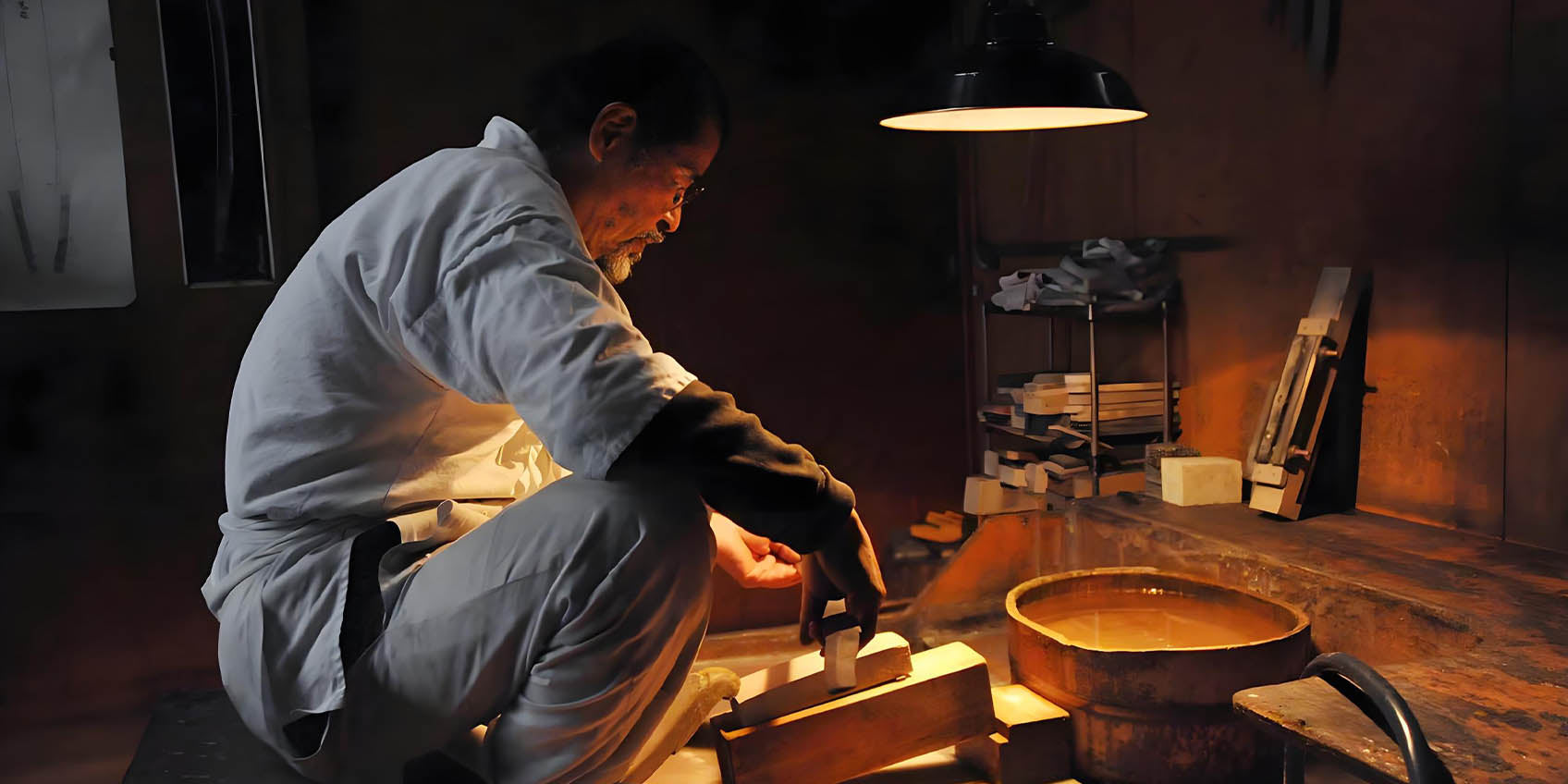Sword Forging : Clay Tempering, Hamon, and Differential Hardening

Clay Tempering, Hamon, and Differential Hardening: Key Techniques in Sword Forging
In the world of sword forging, clay tempering, hamon creation, and differential hardening are critical processes that determine the quality and performance of a sword. These techniques not only influence the hardness and toughness of the blade but also affect the overall structure of components like the sword handle, pommel, and blade design. This article will explore the impact of these processes on blade performance while incorporating key elements of katana forging.
Clay Tempering: Enhancing Blade Toughness
Clay tempering is a process where a layer of protective clay is applied to the blade after it has been quenched, allowing it to cool slowly and regain some toughness. During forging, the artisan applies this clay layer to the blade’s surface, which not only protects the blade but also controls the heat release, ensuring a balanced hardness and toughness. This technique makes the blade more durable in use, reducing the risk of breakage—a crucial factor for practice swords and everyday swords.
Hamon: Aesthetic and Functional Craftsmanship
Hamon creation involves applying clay to the blade before quenching, which results in a unique wave-like pattern known as the "hamon." This pattern is not only visually striking but also reflects the differential hardness along the blade. For those who value both aesthetics and practicality in sword handle design and blade design, hamon is an ideal technique.
Differential Hardening: Balancing Hardness and Toughness
Differential hardening emphasizes the balance between hardness and toughness of the blade. By applying clay to specific areas of the blade, the artisan controls the cooling rate of different parts of the blade, resulting in a hard edge and a softer spine. This technique ensures the blade's durability and safety, making it particularly suitable for sabers and katanas used in combat.
The Art and Techniques of Katana Forging
In katana forging, the forging process requires a high level of technical skill, especially in the areas of clay tempering and hamon creation. The sword handle and blade components play crucial roles in the forging process, ensuring that each part is designed to support the overall balance and functionality of the sword.
Sword forging also involves other important elements such as the sword pommel (or handle). These components are vital for the comfort and operation of the sword in combat. For those interested in creating practice swords or combat swords, understanding these components and their design is key to successful forging.
Our Hamon Blade Crafting Process: Double Heat Treatment for Superior Blade Performance
In our company, every hamon blade undergoes a double heat treatment process. This dual treatment ensures that the blade’s spine has enough toughness to prevent the blade from becoming too soft, thus maintaining its overall performance. This process makes the blade not only sharp and durable but also visually stunning. Additionally, this blue-hued blade, paired with a dragon-patterned scabbard, perfectly merges aesthetics with functionality, creating a truly collectible and usable masterpiece.
Conclusion
Whether it's clay tempering, hamon creation, or differential hardening, these techniques are crucial in the art of sword forging. They not only determine the blade's performance but also affect key components such as the sword pommel, blade design, and overall structure. Through our expert craftsmanship and double heat treatment process, we produce swords that are not only highly functional but also meet the highest aesthetic standards. If you're interested in sword design or sword forging, understanding these techniques will provide you with a deeper insight and skill set.
Handmade Japanese Samurai Katana, Dragon Sword Blue Blade With Bo-Hi 1060 Carbon Steel Clay Tempered Dragon Pattern Fitting
At some events, fans demonstrate their swordsmanship skills, paying tribute to anime's legendary battles. Conventions even hold swordsmanship competitions, letting enthusiasts showcase their passion and creativity with these iconic weapons. Certain anime weapons hold special significance for fans, influencing anime swordsmanship and sparking interest in related merchandise. Celebrations at various anime events further boost their popularity. These weapons symbolize strength and courage, leaving a lasting mark on the anime world.



